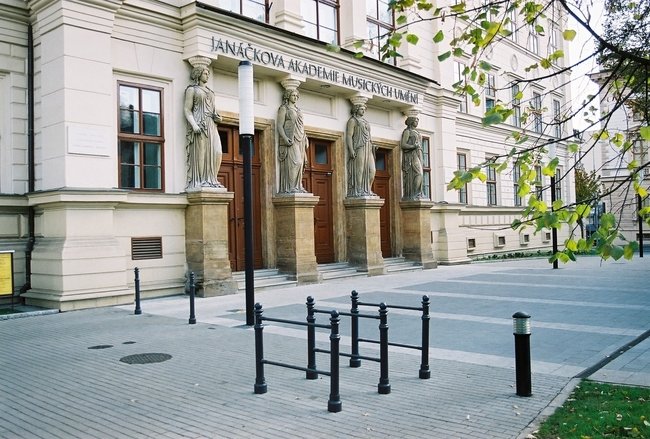L. Janáček – Concertino, On the Overgrown Path (1st series), S. Barber – Sonáta
Pavel Zemen - piano
Tomáš Kraus - clarinet
Martin Novák - french horn
Martin Strakoš - bassoon
Marie Hujerová - 1. violin
Marie Korpasová - 2. violin
Eva Kotrbová - viol
Concert by students from JAMU MF Piano Department

Concertino – Janáček called this a “piano concertino”, and it was written when the composer was a venerable old man (1925), though this was a time when regrettably light and playful themes were entering the world of new music. Originally the composition was to be called the “Spring” Suite, written as chamber music for piano, two violins, viola, clarinet, French horn and bassoon. Although the piano part is dominant in the composition, it does not overwhelm. In particular, the woodwind instruments inventively describe the musical action, which the composer later expressed for each of the four movements as 1. the grumpy hedgehog, 2. the mischievous squirrel, 3. the conceited views of the owl; and 4. finally all of them argue and shout at the same time and the piano has to sort things out. The premiere took place in Brno in February 1926.
The piano cycle of 10 compositions known as On an Overgrown Path, Series I dates back to the year 1900. The order, and later the poetic titles, underwent several changes as a result of the creative process as well as offers from publishers. We shouldn’t look for a specific programme behind the individual titles – they can be considered as reminiscences of typical times spent in his home town of Hukvaldy, of events that compelled Janáček to record some of his memories on the stave. The first seven autobiographical sketches were first published for the harmonium.
The Piano Sonata by Samuel Barber (1910–1981) was written between 1947 and 1949. The composer originally intended it to be a traditional three-movement piece – a fast and energetic Allegro, a delicate scherzo-style Allegro and an expressive Adagio employing the twelve-tone technique. Then, upon the urging of its first performer, Vladimir Horowitz, he finally added a fourth movement to the sonata, in which a four-part fugue employs complicated syncopated rhythms and elements of jazz harmony to give American music its “first truly great original sonata”.
Eva Drlíková